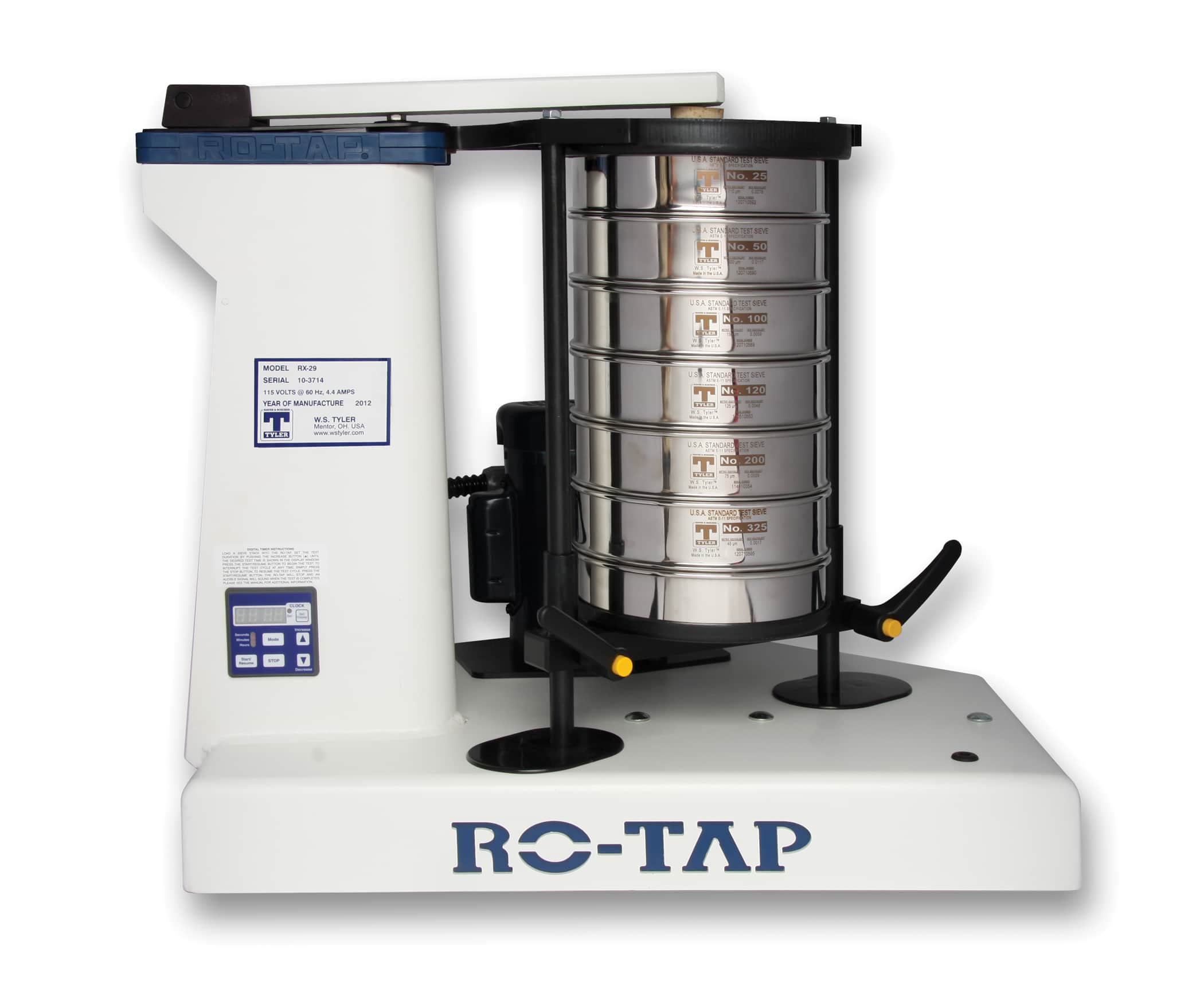How Does Particle Size Analysis Benefit the Molded Pulp Fiber Industry
There is an undeniable push to reduce the amount of single-use plastics we use globally. For these reasons, we are seeing explosive demand for molded pulp fiber packaging.
Molded fiber manufacturers must implement a quality control program to ensure that customer expectations are met. Integrating a reliable particle size analysis lab setting is an integral part of this process.
Having said that, how exactly does particle size analysis fit into the world of molded pulp fiber?
As a pioneer of the original sieve shaker, W.S. Tyler has over 150 years of particle size analysis experience. We strive to be an extension of your team, helping to remove the roadblocks you may encounter when molding fiber.
With that, this article was written to help you better understand the role of particle size analysis in regard to molded pulp fiber and how it can benefit your process. You will learn:
- How particle size analysis fits into the process of molding pulp fiber
- The particles that are typically tested in the molded pulp fiber industry
- The particle size analysis instruments you can use to test your particles
How Does Particle Size Analysis Benefit the Molded Pulp Fiber Industry?
In order to produce high-quality molded pulp fiber products, manufacturers must spend time fine-tuning a pulp mixture that accommodates customer expectations. As the industry continues to develop, various minerals are being discovered that can improve the way molded pulp fiber goods are produced.
This includes lowering manufacturing costs, strengthening the bond between fibers, reducing the abrasiveness of the surface, improving the printability of the surface, and improving the recyclability of the final product. These minerals do so by increasing throughput during the forming process, reducing stickies and pitch in the pulp, minimizing the energy required to drain and dry molded fiber, and improve the effectiveness of various coating chemicals.
So, how does particle size analysis fit into all of this?
Well, to produce molded pulp fiber with uniform quality, the size of the mineral particles must be uniform. Particle size analysis verifies the particle size range of the minerals being used, ensuring that a specific amount of a specific mineral has the same effect on the pulp each time.
This, in turn, allows molded pulp fiber manufacturers to standardize a pulp mixture that can be used to consistently produce molded pulp fiber goods, no matter who is working the production line.
What Mineral Particles Are Used When Forming Molded Pulp Fiber Products?
During the forming process, four predominant mineral particles can be used to improve the quality of mold pulp fiber products you deliver to your customers. These minerals are Talc, Bentonite, Kaolin, and Calcium Carbonate.
Talc
Talc is often used in small amounts to control friction when forming, helping your wire mesh molds and other forming equipment last longer. This mineral can also ensure the final mold can be printed on thoroughly and efficiently.
Another beneficial quality of talc is that it can catch and collect pitch and stickies. This proves to be especially beneficial when working with various wood and recycled fibers.
To that end, it should be noted that talc is considered the softest mineral on earth.
Kaolin
Kaolin, also known as china clay, has been used for hundreds of years in a wide range of applications, such as ceramics. In regard to molded pulp fiber, however, it is specifically used to help deliver smoother molded pulp fiber goods with enhanced whiteness.
Much like talc, kaolin can be used to help ensure the surface of the molded pulp fiber is more printable. Additionally, it can be used to help manufacturers laser mark the surface of the molded pulp fiber more effectively.
Calcium Carbonates
Calcium carbonates are some of the most commonly used minerals in the pulp and fiber industry and often come in the form of limestone, marble, and chalk. In most cases, these minerals are used as fillers to control the amount of fiber being used.
Having said that, calcium carbonate can also be used to deliver a whiter, brighter finish.
Bentonite
Bentonite is a mineral that can be found in volcanic ash and is known for having particles with large surface areas. This mineral is specifically used to collect and manage pitch and stickers found in pulp.
What Equipment Can Be Used To Test Mineral Particle Size?
Three primary particle size analysis instruments—sieve shakers, air jet sieves, and dynamic image analysis systems—can verify that the minerals used to mold pulp fiber consist of uniform particle sizes.
Sieve Shakers
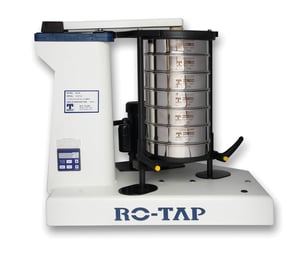
Sieve shakers, such as the W.S. Tyler RO-TAP RX-29, utilize a mechanical motor to create an oscillating motion alongside brute force hammer taps. This dual motion agitates particles in a test sieve stack, allowing them to find the openings in the mesh screens.
That said, there are sieve shaker models, such as the RO-TAP RX-812, that do not feature the brute force hammer taps to better test particles 100 mesh and larger.
It should be noted that sieve shakers are reflected in dozens of industry standards. This means that, in the case of an audit, the proper quality control paperwork is easily accessible.
With that, sieve shakers are known for being one of the loudest particle size analysis instruments on the market. While there are sound enclosures designed to reduce operation noise, sieve shakers can sometimes cause disruption.
Especially with smaller particle size analysis operations.
Additionally, as mechanical machines, sieve shakers have many moving parts under the hood. Some of these parts are known to wear over time, requiring regular maintenance.
Sonic Sifters
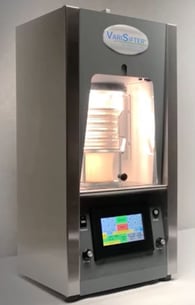
Sonic sifters, such as the Varisifter Sonic Separator, are designed to test finer particles ranging from 5.6 mm to 3 um. They employ a sonic wave to create an oscillating air column that works in conjunction with an agitating horizontal tap to promote particle movement throughout a stack of sonic sieves.
A sonic sifter grants operators complete control of the amplitude of the sonic wave to ensure they can test material regardless of density or texture.
Now, it should be noted that these devices do not use standard 8- or 12-inch test sieves. Instead, sonic sifters are designed to house 3-inch acrylic test sieves.
These can prove beneficial, as their transparent profile allows operators to observe how easily sample material passes through the sieves in the stack.
Air Jet Sieves
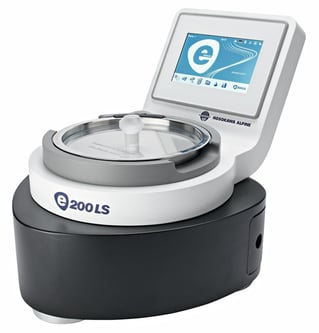
Air jet sieves, such as the NEXOPART® Air Jet Sieve e200 LS, are devices that are designed with easily agglomerated particles in mind. These devices utilize a state-of-the-art vacuum system to create a jet of air that causes the particles to collide with its plexiglass lid.
As a result, the particle agglomeration is broken up, allowing the individual particles to fine the openings of the test sieves. This action makes it ideal for finer particles, such as the particles of calcium carbonate.
While an air jet sieve will provide the best results when testing agglomerated material, there are some things to consider.
It should be noted that the finer particles the device is designed to test can cause stubborn buildup throughout the filter of the machine. As a result, it is recommended that the device be thoroughly cleaned between uses.
Additionally, the testing process is known to be fairly time-consuming. This is because you must manually transfer material from test sieve to test sieve, going in order of the test sieve stack.
This leaves you vulnerable to user error unless specialized RFID test sieves are used.
Dynamic Image Analysis Systems
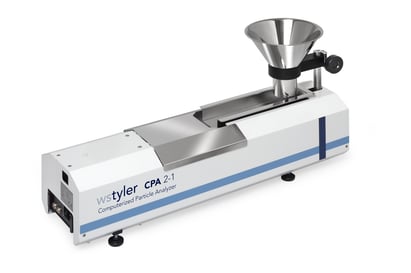
Dynamic image analysis systems are highly sophisticated devices that can provide insight into not only the size of your particles but their shape as well. This can provide tremendous value to those attempting to match the shape of their fibers to the shape of the minerals.
Dynamic image analysis systems, such as the NEXOPART® Computerized Particle Analyzer, utilize a high-speed line-scan camera. This camera work to capture the profile of up to 10,000 particles as fine as 10 microns per second.
This unique system helps to complete testing as quickly as three minutes. This is substantial when compared to the 30-60 minute time frame of the other instrument, as it can help reduce labor costs while allowing you to spend more time refining other aspects of your molded pulp fiber process.
Get To Know What Device Best Accommodates Your Process
The molded pulp fiber industry is an integral asset to the worldwide initiative aimed at replacing single-use plastics. It will help preserve the environment by minimizing ocean waste, saving wildlife, and reducing the amount of landfills.
To ensure a certain level of customer satisfaction is met, molded fiber manufacturers must ensure the various minerals that are introduced to a pulp mixture are uniform in size. Particle size analysis can be used to verify that the particles going into a pulp mixture are of a certain quality, ensuring consistent molds.
Now that you have a better understanding of the instruments you can use to conduct accurate and repeatable particle size analysis testing, it's time to dig deeper and identify the device right for you. The best way to do so is to compare and contrast each device or, at a minimum, the ones you are interested in.
Here at W.S. Tyler, we have helped lab technicians navigate the world of particle size analysis for over 150 years. We will use the knowledge within our four walls to ease any uncertainties you may have in the particles you work with, ultimately building your confidence in the products you offer.
Review the following article to learn more about how the various particle analysis instruments stack up against one another:
About Ronnie Brown
Ronnie is the Content Writer for W.S. Tyler and has four years of experience as a professional writer. He strives to expand his knowledge on all things particle analysis and woven wire mesh to leverage his exceptional writing and graphic design skills, creating a one-of-a-kind experience for customers.

